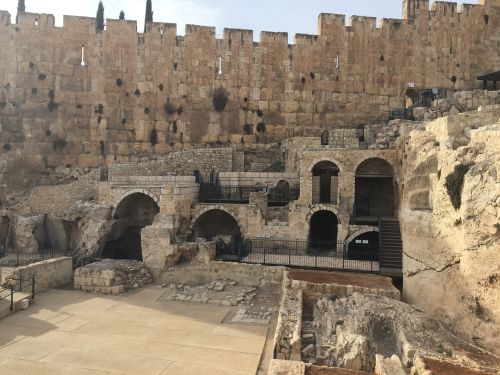 Humans have long associated water with cleanliness. Yes, that’s about as obvious as “water is wet,” but we’ve applied this idea to our spiritual beliefs and practices. In religions all over the world, water represents cleansing, rebirth, and purity. From the Torah’s purity laws to modern rites of passage, the mikveh ritual bath has been important in Jewish religious and cultural practice.
Humans have long associated water with cleanliness. Yes, that’s about as obvious as “water is wet,” but we’ve applied this idea to our spiritual beliefs and practices. In religions all over the world, water represents cleansing, rebirth, and purity. From the Torah’s purity laws to modern rites of passage, the mikveh ritual bath has been important in Jewish religious and cultural practice.
Ritual Purity in Jewish Antiquity
The Torah contains 613 commandments. Judaism 101 lists 16 mitzvot about ritual purity, plus several concerning the behavior of those considered unclean. Many things could make you ritually impure: touching certain animals, giving birth, having leprosy, and several types of bodily discharges. Being unclean, or “tumah,” was usually a temporal state. For instance, touching a dead body made you unclean for seven days. You also had to purify yourself on the third and seventh days to become “taharah,” or clean.
Touching a dead body was the ultimate way to become unclean, according to the Torah. It required a special purification ritual: being sprinkled with water mixed with the ashes of a red heifer. For most other states of uncleanliness, you could wash in a ritual bath.
The Evolution of the Mikveh
The Torah doesn’t specify what constitutes a “ritual bath.” The original Hebrew simply refers to a “mikveh,” which translates as “collection.” The Jewish Virtual Library explains that one of the oldest known ritual bathing pools was discovered in Jericho and dates to the first century B.C.E. Mikva’ot haven’t been found in older settlements, but they became common in ancient towns during the reign of Herod the Great up until the siege of Jerusalem in 70 C.E. They were often built in the basements of private homes, so family members could immerse whenever needed. Public mikva’ot were used by laborers and lower-class individuals who couldn’t afford private ones in their homes.
Rabbinic texts spell out regulations for constructing a mikveh. According to My Jewish Learning, the Babylonian Talmud states that they must contain enough water to completely immerse an average-sized man. In today’s measurements, that’s between 150 to 200 gallons. You can’t just turn on the tap to fill a mikveh, either. It must be connected to a naturally occurring source such as a spring. But springs are hard to come by in many parts of the Levant, so rainwater cisterns were acceptable alternatives.
Modern mikva’ot have come a long way since their ancient counterparts. Today, many versions feature a rainwater tank connected to a pool with heated and treated tap water. For halakhic purposes, the treated tap water takes on the purifying qualities of the rainwater. With disinfecting and filtration, contemporary mikva’ot are much more hygienic than those from 2,000 years ago. Publicly available mikva’ot have attendants to help people prepare and safely get in and out of the ritual pool.
The Mikveh’s Role in Modern Times
The mikveh remains significant in Judaism today. Rabbi Maurice Lamm explains that converts must immerse in a mikveh. There is deep symbolism in this act, Rabbi Lamm adds. It represents rebirth as a Jew, cleansing from the past, and crossing the threshold into a new spiritual life.
For Jewish people, the mikveh serves many other purposes. Modern milestones can be marked by immersing in the mikveh: b’nai mitzvot, graduations, or major birthdays. Others immerse themselves as part of healing journeys from losing a loved one, divorce, abuse, sexual assault, or other traumas. Prayers accompany immersions, and those in the mikveh can stay after immersion for reflection and meditation.
Purification, Transition, and Significance
Water has cleansing qualities, both literally and symbolically. The mikveh retains its importance over many centuries, from ancient Israel to the Jewish diaspora in modern times. Its core idea remains: Cleanse yourself of the old and emerge anew.